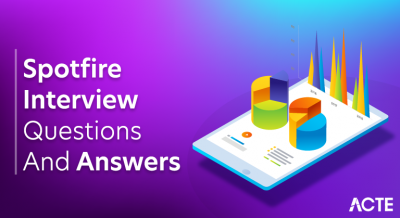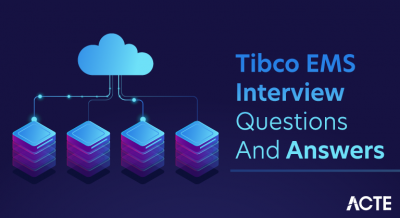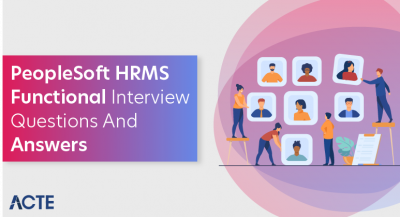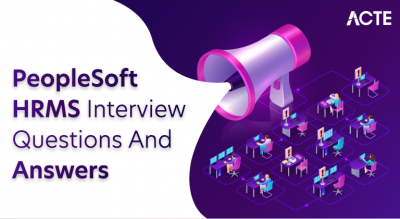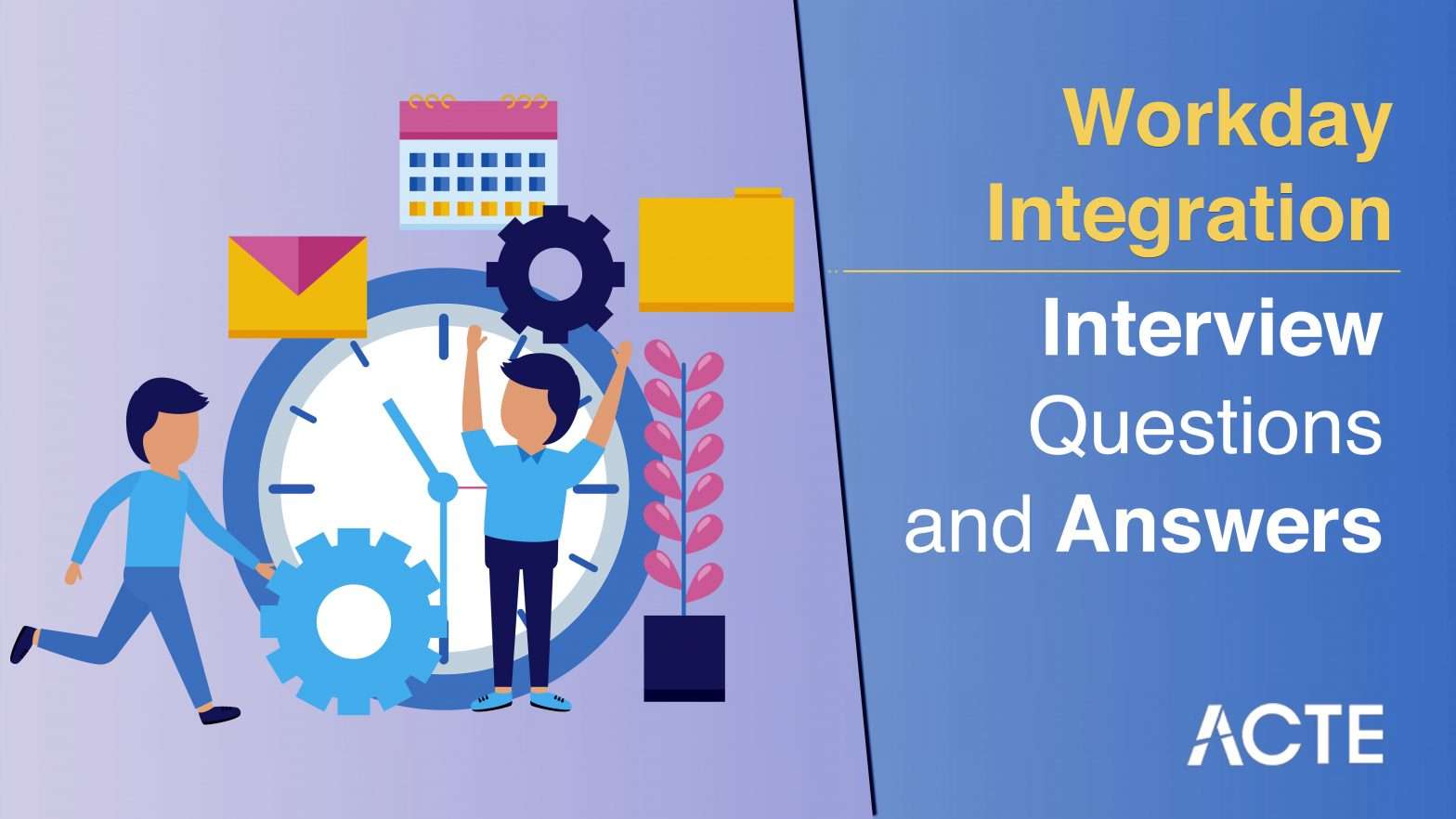
Workday integration empowers organizations to seamlessly connect their Workday system with external applications, enabling efficient data exchange and interoperability across various business functions. Leveraging a range of integration tools and methods such as Workday Studio Integrations, Enterprise Information Builder (EIB), Cloud Connect, Web Services APIs, Integration Cloud Platform (IPC), and document transformation tools, users can tailor integrations to suit their specific requirements.
1. What’s Workday Integration?
Ans:
Workday Integration refers to the flawless connection between the Workday platform and other operations or systems, easing data exchange and process robotization. It enables associations to attend to data, streamline workflows, and enhance overall effectiveness by integrating Workday with various third-party tools and services, ultimately fostering greater agility and responsiveness in business operations.
2. Why is Workday Integration crucial?
Ans:
- Workday Integration plays a pivotal role in enabling associations to maximize the value of their HR, finance, and functional data.
- By connecting distant systems, it ensures data delicacy, eliminates homemade crimes, and enhances decision-making through real-time perceptivity.
- Also, it empowers businesses to acclimatize snappily to evolving requirements and request dynamics by automating processes and fostering collaboration across departments.
3. What are the crucial benefits of Workday Integration?
Ans:
- One significant benefit of Workday Integration is its capability to polarize data operation, furnishing a unified view of information across the association.
- This promotes data thickness and eliminates silos, leading to better decision- timber and enhanced productivity.
- Also, Workday Integration streamlines business processes reduces functional costs and improves overall dexterity by enabling flawless communication between different systems and operations.
4. How does Workday Integration work?
Ans:
Workday Integration operates through a combination of pre-built connectors, APIs, and middleware results that facilitate data exchange between Workday and other systems. Organizations can use these tools to configure integrations based on their specific conditions, enabling them to transfer data, conduct detectors, and attend processes in real-time or through listed batches.
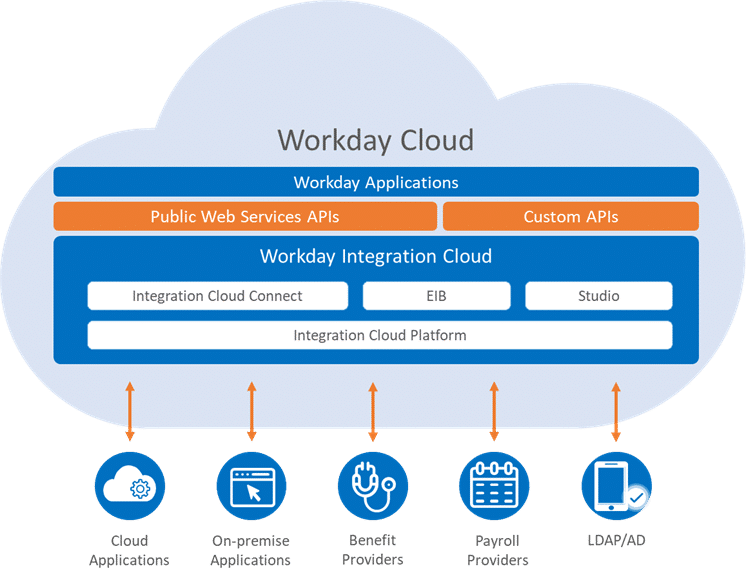
5. What are some standard integration scripts for Workday?
Ans:
Standard integration scripts for Workday include:
- Connecting with payroll systems for accurate hand compensation operation.
- Integrating with retaining platforms for flawless seeker onboarding.
- Linking with finance systems for accompanied budgeting and fiscal reporting.
6. What are the challenges of enforcing Workday Integration?
Ans:
While Workday Integration offers multitudinous benefits, associations may face challenges similar to complex data mapping conditions, Integration with heritage systems, and ensuring data security and compliance during perpetration. Also, maintaining integrations and keeping them up-to-date with evolving business requirements and system updates requires ongoing monitoring and support from experienced integration specialists.
7. What is the difference between workday Studio Integrations and Enterprise Information Builder?
Ans:
| Aspect | Workday Studio Integrations | Enterprise Information Builder (EIB) |
|---|---|---|
| Complexity | Suitable for complex integrations requiring extensive data manipulation | Designed for simple to moderately complex integrations |
| Development Approach | Code-based development using Workday Studio IDE | Graphical interface for configuration-based development |
| Customization | Highly customizable with full control over data transformation | Limited customization options, primarily configuration-based |
| Skill Requirement | Requires programming skills and familiarity with Workday Studio IDE | Requires minimal programming skills, more accessible to business users |
8. What is the difference between Workday Studio and Workday Cloud Connect?
Ans:
Workday Studio and Workday Cloud Connect are both tools handed by Workday for integration purposes, but they serve different requirements. Workday Studio is an intertwined development terrain( IDE) used for erecting complex integrations and custom business sense using Java. On the other hand, Workday Cloud Connect is a more straightforward tool designed for configuring point-to-point integrations between Workday and external systems using pre-built connectors and templates.
9. How do you handle Error running and logging in Workday Integrations?
Ans:
- Error handling and logging are pivotal aspects of Workday Integrations to insure data integrity and trustability.
- I implement strong error handling in integration workflows to capture exceptions and facilitate resolution, similar to retry logic and error notifications for support teams.
- I utilize Workday’s logging capabilities to monitor integration conditions, assess performance, and troubleshoot issues, facilitating continuous improvement of integration processes.
10. What security measures do apply when integrating Workday with external systems?
Ans:
- When integrating Workday with external systems, I prioritize data security by enforcing industry-standard encryption protocols, secure authentication mechanisms, and part-ground access controls.
- This includes configuring HTTPS communication for data transmission, exercising OAuth or SAML for an identity operation, and confining access to sensitive data grounded on users’ places and warrants.
- Regular security checkups and compliance assessments ensure adherence to nonsupervisory conditions and alleviate implicit vulnerabilities in the integration ecosystem.
11. How do you ensure scalability and performance optimization in Workday Integrations?
Ans:
Ensuring scalability and performance optimization in Workday Integrations involves designing effective data synchronization strategies, minimizing network quiescence, and optimizing API operation. I use asynchronous processing and batch operations to handle large data volumes, apply hide mechanisms to reduce spare requests and employ cargo balancing methods to distribute the workloads unevenly across the integration endpoints.
12. What are your strategies for testing Workday Integrations?
Ans:
- Testing Workday Integrations requires comprehensive test planning, including unit testing, integration testing, and end-to-end testing across various scripts and edge cases.
- I use Workday’s testing tools and surroundings to pretend integration workflows, validate data mappings, and corroborate Error handling mechanisms.
- Automated testing fabrics and scripts are employed to ensure repetition and effectiveness in the retrogression testing, while homemade testing is conducted for complex scripts and user acceptance testing.
13. How do you handle data metamorphoses in Workday Integrations?
Ans:
- Data metamorphoses in Workday Integrations involve mapping fields between different data formats and structures.
- I use Workday’s metamorphosis tools, similar to XSLT, XPath, or Workday’s erected-in data mapping capabilities, to transfigure data directly.
- This includes handling data confirmation, conversion, and enrichment to ensure comity and thickness between source and target systems.
14. What are the considerations for integrating Workday with on-premise systems?
Ans:
Integrating Workday with on-premise systems requires considerations such as network connectivity, security protocols, and data synchronization styles. I assess the organization’s network structure and firewall configurations to establish secure communication channels. Using Workday’s integration connectors or middleware, I apply integration patterns like VPN tunneling or direct connectivity to enable real-time data exchange while ensuring security and compliance with regulatory norms.
15. How do you handle versioning and backward comity in Workday Integrations?
Ans:
Versioning and backward comity are essential aspects of maintaining stability and durability in Workday Integrations. I follow interpretation and control stylish practices to track changes and manage different performances of integration vestiges, ensuring smooth transitions between releases. Also, I design integration interfaces with backward comity in mind, using similar methods such as versioned APIs, flexible data schemas, and graceful declination to minimize dislocations and maintain comity with aged system performances or customer operations.
16. What is your approach to monitoring and troubleshooting Workday Integrations?
Ans:
Monitoring and troubleshooting Workday Integrations involve:
- Setting up visionary monitoring tools.
- Assaying logs.
- Using individual capabilities to identify and resolve issues instantly.
17. What strategies do you employ for change operation in Workday Integrations?
Ans:
Change management in Workday Integrations involves coordinating updates, patches, and configuration changes to minimize disruptions and maintain system stability. I follow a structured process that includes impact assessment, stakeholder communication, and testing changes in a sandbox before deploying them to production. Control and documentation of integration changes help track updates and facilitate rollback procedures if necessary, ensuring smooth transitions and reducing risks associated with system advancements.
18. What steps do you take to ensure compliance with regulatory requirements in Workday Integrations?
Ans:
- Ensuring compliance with regulatory requirements in Workday Integrations involves implementing data protection measures, audit trails, and access controls to safeguard sensitive information.
- I collaborate with legal and compliance teams to understand regulatory requirements and incorporate controls like encryption, data masking, and role-based access into integration workflows.
- Regular checkups and compliance assessments are conducted to validate adherence to assiduity norms and nonsupervisory fabrics, ensuring data sequestration and integrity throughout the integration lifecycle.
19. How do you approach handling honest-time integrations versus batch integrations in Workday?
Ans:
Handling real-time integrations in Workday involves configuring event-driven triggers and using Web Services APIs for immediate data exchange between systems. For batch integrations, I use Workday’s EIB (Enterprise Interface Builder) or Integration Cloud to schedule and automate data exports at specified intervals, ensuring efficient and timely data management across platforms.
20. What strategies do you employ to ensure data thickness and integrity in Workday Integrations?
Ans:
- Ensuring data thickness and integrity in Workday Integrations requires enforcing confirmation rules, data conciliation mechanisms, and error-running procedures.
- I design Integration workflows to apply data confirmation rules at entry points, perform data integrity checks during metamorphosis and mapping processes, and apply rollback mechanisms for failed deals.
- Also, regular data checkups and confirmation routines are conducted to identify and resolve disagreements, ensuring data delicacy and trustability across integrated systems.
21. How do you manage dependencies between different Workday Integration tasks or workflows?
Ans:
Managing dependencies between Workday Integration tasks involves:
- Defining prosecution sequences.
- Establishing inter-task communication channels.
- Enforcing error handling strategies to ensure smooth workflow unity.
22. What is your approach to handling authentication and authorization in Workday Integrations?
Ans:
Handling authentication and authorization in Workday Integrations involves configuring secure authentication mechanisms similar to OAuth2.0 or SAML for identity verification and access control. I establish integration users’ accounts with applicable warrants and places in Workday, ensuring least-honorable access to sensitive data and integration endpoints.
23. What part does error logging and covering play in maintaining Workday Integrations?
Ans:
- Error logging and covering are essential for maintaining the trustability and performance of Workday Integrations.
- I configure logging mechanisms to capture detailed information about integration conditioning, crimes, and performance criteria, enabling accurate- -time monitoring and troubleshooting.
- Integration monitoring dashboards and cautions are set up to proactively describe anomalies, backups, or failures, easing timely intervention and resolution.
24. What is your approach to integrating custom business logic or validation rules into Workday Integrations?
Ans:
Integrating custom business sense or confirmation rules into Workday Integrations involves using Workday’s extensibility features similar to custom reports, calculated fields, or business process fabrics. I unite with business stakeholders to define custom sense conditions and collude them with integration workflows, ensuring alignment with business processes and data governance norms.
25. How do you approach handling data migration in Workday Integrations?
Ans:
- Data migration in Workday Integrations involves rooting, transmutation, and loading data from heritage systems into Workday’s structured format.
- I follow a systematic approach, starting with data profiling to understand source data complications and dependencies.
- Exercising Workday’s data conversion tools and templates, I collude data fields, perform data sanctification, and ensure data quality before importing it into Workday.
26. What does the concept of tenant-to-tenant integrations in Workday entail?
Ans:
Tenant-to-tenant integrations in Workday involve connecting multiple Workday cases belonging to different associations or business units to change data and attend processes. I use Workday’s integration frame and tenant-to-tenant connectors to establish secure communication channels and configure data mappings between source and target tenants.
27. How do you approach performance tuning and optimization in Workday Integrations?
Ans:
Performance tuning and optimization in Workday Integrations involve:
- Relating and addressing backups.
- Optimizing data recycling workflows.
- Fine-tuning system configurations to enhance output and responsiveness.
28. What part does attestation play in Workday Integration systems?
Ans:
- Attestation in Workday Integration systems is a reference guide for developers and stakeholders, detailing integration conditions, design specifications, and deployment procedures.
- I produce detailed attestation for integration workflows, data mappings, metamorphosis rules, and error-running processes to ensure clarity and thickness across the design lifecycle.
- This facilitates knowledge transfer, troubleshooting, and unborn conservation conditioning, enabling effective collaboration and ensuring design success.
29. What steps do you take to ensure data segregation and compliance with GDPR or other regulatory requirements in Workday Integrations?
Ans:
Ensuring data sequestration and compliance with GDPR or other nonsupervisory conditions in Workday Integrations involves enforcing data masking, anonymization, and encryption ways to cover sensitive information. I configure access controls, data retention programs, and inspection trails to track data access and operation, ensuring responsibility and transparency in data handling processes.
30. What strategies do you employ for disaster recovery and business durability planning in Workday Integrations?
Ans:
Disaster recovery and business durability planning in Workday Integrations involve:
- Enforcing backup and failover mechanisms.
- Establishing spare structure.
- Defining recovery procedures to minimize time-out and data loss in the event of system failures or dislocations.
31. What considerations should be taken into account when integrating Workday with heritage systems?
Ans:
Integrating Workday with heritage systems requires careful planning to bridge technological gaps and ensure comity. I assess the heritage system’s data formats, APIs, and integration capabilities to determine the most suitable approach. Heritage data migration strategies, similar to batch processing or data staging, are employed to ensure flawless data transfer. I also unite with stakeholders to effectively address security enterprises, data mapping disagreements, and heritage system constraints.
32. How do you handle data metamorphosis and mapping between Workday and external systems?
Ans:
- Data metamorphosis involves converting data formats and structures to ensure comity between Workday and external systems.
- I use Workday’s Transformation Services or custom XSLT scripts to collude fields, apply data confirmation rules, and transfigure data as per business conditions.
- This process includes handling data dependencies, hierarchical structures, and complex data mappings to ensure accurate data synchronization across systems.
33. What has been your experience with enforcing inbound integrations in Workday?
Ans:
Inbound integrations involve importing data into Workday from external sources, similar to aspirant shadowing systems or payroll platforms. My experience includes configuring inbound integration templates using Workday’s Enterprise Interface Builder( EIB) or Web Services. I ensure data thickness and integrity by validating incoming data against predefined business rules and conducting thorough testing to corroborate the delicacy of imported records.
34. How do you approach troubleshooting and resolving issues in Workday integrations?
Ans:
- Troubleshooting Workday integrations requires a systematic approach to identify root causes and apply effective results.
- I work with Workday’s integration logs, error dispatches, and monitoring tools to diagnose issues proactively.
- Uniting with cross-functional brigades, I dissect integration workflows, data mappings, and system configurations to pinpoint disagreement and apply corrective conduct.
35. What strategies do you employ to ensure compliance and data governance in Workday integrations?
Ans:
Compliance and data governance are consummate in Workday integrations to cleave to nonsupervisory conditions and safeguard sensitive information. I apply part-grounded access controls, data encryption, and inspection trails to cover data confidentiality and integrity. Compliance checks and data confirmation rules are executed at various stages of the integration workflow to help prevent unauthorized access and ensure data delicacy.
36. What is your approach to managing integration changes and updates in a production environment?
Ans:
- Managing integration changes in a product terrain requires a structured change operation process to minimize dislocations and ensure system stability.
- I follow a phased approach, starting with thorough testing in a development or sandbox terrain before planting changes to the product.
- Change control procedures, versioning mechanisms, and rollback strategies are enforced to alleviate pitfalls and maintain data integrity during updates.
37. What has been your experience with integrating Workday with external APIs or third-party applications?
Ans:
Integrating Workday with external APIs or third-party operations involves using Workday’s Integration Cloud Platform( ICP) and peaceful Web Services. My experience includes developing custom integrations using Workday’s API attestation and SDKs to enable bidirectional data exchange. Additionally, I focus on implementing robust error handling and monitoring to maintain integration reliability and performance.
38. What part does Change Discovery play in Workday integrations, and how do you use it?
Ans:
- Change Discovery in Workday integrations enables the discovery of data changes in real time, driving automatic updates and synchronization with external systems.
- I work on Change Detection features to cover specific data fields or objects for variations and detector integration workflows.
- This ensures data thickness across systems and minimizes homemade intervention, enhancing functional effectiveness and reducing processing detainments.
39. What has been your experience with integrating Workday with other SaaS applications, such as Salesforce or ServiceNow?
Ans:
Integrating Workday with other SaaS operations involves using standard APIs, middleware platforms, and custom integration results. My experience includes configuring bi-directional data synchronization between Workday and Salesforce or ServiceNow using middleware tools like MuleSoft or Dell Boomi. I unite with cross-functional brigades to define integration conditions, chart data fields, and establish data governance programs to ensure flawless interoperability and data thickness across integrated systems.
40. How do you handle interpretation control and backward comity in Workday integrations?
Ans:
- Interpretation control in Workday integrations involves managing changes to integration configurations, data mappings, and affiliate delineations over time.
- I borrow versioning stylish practices, similar to maintaining backward comity, establishing modifications, and labelling integration vestiges with interpretation identifiers.
- Retrogression testing and confirmation are performed to ensure that streamlined integrations maintain comity with systems and downstream processes, minimizing dislocations and data inconsistencies.
41. What strategies do you employ to cover and maintain the health of Workday integrations in a product terrain?
Ans:
Monitoring and maintaining the health of Workday integrations in a product terrain bear visionary monitoring, performance tuning, and error handling mechanisms. I apply covering dashboards, cautions, and automated announcements to track integration status, inactivity, and error rates in real time. Performance tuning ways, similar to optimizing query performance and resource application, help optimize integration workflows and ensure optimal system performance.
42. How do you handle data synchronization challenges when integrating Workday with on-demand systems or databases?
Ans:
- Integrating Workday with on-demand systems or databases presents challenges related to network quiescence, data thickness, and connectivity.
- To address these challenges, I employ methods similar to data staging, incremental data synchronization, and change data prisoner( CDC).
- Batch processing and listed synchronization jobs are used to transfer data between Workday and on-demand systems, ensuring data thickness and minimizing performance impact on product surroundings.
43. What strategies do you use to ensure cross-functional collaboration and communication during Workday integration projects?
Ans:
Cross-functional collaboration is vital for successful Workday integration systems. I grease regular meetings involving stakeholders from HR, IT, finance, and other departments to align on integration conditions, timelines, and deliverables. Clear communication channels, similar to design dashboards and status reports, are established to ensure transparency and responsibility.
44. What way do you take to ensure compliance with data protection regulations like GDPR or CCPA in Workday integrations?
Ans:
- Compliance with data protection regulations like GDPR or CCPA requires enforcing data governance programs, sequestration controls, and concurrence operation mechanisms in Workday integrations.
- I conduct data protection impact assessments( DPIAs) to identify and alleviate sequestration pitfalls associated with data processing conditioning.
- Data anonymization, pseudonymization, and encryption ways are employed to cover sensitive information and insure compliance with nonsupervisory conditions.
45. What is your approach to user acceptance testing (UAT) and training for Workday integrations?
Ans:
User acceptance testing (UAT) for Workday integrations involves validating workflows, data mappings, and user interfaces to ensure they meet business requirements. I collaborate with end-users and subject matter experts to define UAT scripts and acceptance criteria. Training sessions are held to familiarize users with the integrated systems, and feedback from UAT is used to refine configurations for improved user satisfaction post-deployment.
46. What APIs does Workday offer?
Ans:
- Yes, Workday provides a robust set of APIs( operation Programming Interfaces) that allow inventors to pierce and interact with Workday’s functionalities programmatically.
- These APIs enable Integration with external systems, data birth, manipulation, and robotization of various processes within Workday.
- Workday’s APIs follow peaceful principles and support standard protocols like SOAP and HTTP, offering inflexibility and extensibility for erecting custom integrations and operations.
47. What is Workday Cloud Connect?
Ans:
Workday Cloud Connect is the middleware solution provided by Workday that facilitates integration between Workday and third-party applications, databases, and systems. It offers pre-built connectors, add-ons, and integration templates for popular systems such as Salesforce, Microsoft Dynamics, and Oracle, enabling seamless data flow and reducing the time needed for integration setup.
48. What is the process for integrating Workday with SAP?
Ans:
- Yes, Workday offers integration capabilities to connect with SAP ERP( Enterprise Resource Planning) systems, enabling flawless data synchronization and business process unity between the two platforms.
- Integration between Workday and SAP generally involves configuring integration connectors, data mappings, and workflow robotization to grease data exchange for HR, finance, payroll, and the other modules.
- This Integration helps associations streamline operations, facilitate data delicacy, and enhance decision-making across departments.
49. Will integrations with Workday be less complex?
Ans:
Integrations with Workday can be less complex due to Workday’s unified data model, standardized integration protocols, and pre-built connectors. Still, the complexity of integrations depends on factors similar to the compass of Integration, data volume, system armature, and customization conditions. Additionally, thorough planning and stakeholder collaboration are essential to address potential challenges and ensure successful implementation.
50. What is WSDL?
Ans:
- WSDL( Web Services Description Language) is an XML-grounded language used to describe the functionalities offered by web services and their communication protocols.
- In the environment of Workday integrations, WSDL lines define the structure of Workday’s web services, including the operations they support, input/ affair parameters, data types, and communication formats.
- Developers use WSDL lines to understand how to interact with Workday’s APIs programmatically and to induce customer law for consuming Workday web services in their operations.
51. What prefix is used for searching integrations?
Ans:
In Workday, the prefix” wd” is generally used for searching integrations. This prefix is followed by specific keywords or terms related to the integration object or business process being searched. For illustration, to search for integrations related to hand data, one might use the prefix” wd hand” followed by fresh keywords similar to” hire,” ” termination,” or” compensation” to constrict down the hunt results and find applicable integration tasks or reports.
52. What do you know about Workday Connectors?
Ans:
- Workday Connectors are pre-built integration templates provided by Workday to ensure flawless connectivity and data exchange between Workday and third-party systems.
- These connectors offer out-of-the-box configurations, mappings, and workflows for integrating with popular operations, databases, and services.
- Workday Connectors simplify integration development by abstracting down the complexity of data metamorphosis, protocol running, and authentication.
53. What are the main pre-production and post-production Workday tenants?
Ans:
Workday offers pre-production and post-production tenants for testing and development purposes. Pre-production tenants include Sandbox and Preview tenants, where organizations can configure and test changes before deploying them into production. Post-production tenants, also known as product tenants, are live environments where users access Workday for daily operations, ensuring the separation of development, testing, and production environments to mitigate risks before deployment.
54. What is Workday Cloud Connect Package?
Ans:
- Workday Cloud Connect Package is a pack of pre-built integration templates, connectors, and configuration settings handed by Workday to streamline Integration between Workday and third-party operations or systems.
- These packages offer standardized integration workflows, data mappings, and connectivity options for popular systems such as Salesforce, Workday Financial Management, or Microsoft Dynamics.
- Workday Pall Connect Packages simplify integration development by furnishing applicable factors and stylish practices, enabling associations to accelerate integration systems and achieve faster time-to-value.
55. What are XSL, XSLT, and XPath in the context of Workday Studio?
Ans:
- XSL( Extensible Stylesheet Language) is a luxury language used to transfigure XML documents into different formats, such as HTML, textbooks, or XML itself. XSLT( XSL Transformation) is a language for transubstantiating XML documents using XSL stylesheets.
- XPath is a query language used to navigate XML documents and elect specific rudiments or attributes grounded on their position or parcels.
- In Workday Studio, XSLT and XPath are generally used for data metamorphosis and manipulation in integration workflows, allowing inventors to prize, transfigure, and route data between Workday and external systems efficiently.
56. What are some input and output types for EIBs?
Ans:
Input types for EIBs (Enterprise Interface Builder) in Workday include Excel files (XLS, XLSX), CSV (Comma-Separated Values) files, and XML (Extensible Markup Language) files. Output types for EIBs generally include Workday Integration System (WIS) files, which are XML-based files containing data for reuse by Workday integration services. EIBs can also send results to various destinations such as Workday objects, reports, or external systems via web services or file transfers.
57. What is the process for generating a Workday EIB from a matrix report?
Ans:
No, Workday EIBs( Enterprise Interface Builder) can not be created directly from a matrix report. EIBs are used to import, update, or import data between Workday and external systems using predefined data formats and templates. While matrix reports are used for data analysis and reporting purposes within Workday, they don’t give the functionality to induce EIB templates or define integration workflows.
58. How can we show Error dispatches for Workday EIB?
Ans:
- Error dispatches for Workday EIBs( Enterprise Interface Builder) can be displayed using various styles, such as dispatch announcements, integration logs, or error reports generated during EIB processing.
- Workday allows configuring dispatch announcements to be transferred to designated donors in case of EIB failures or crimes encountered during data processing.
- Integration logs and error reports also give detailed information about failed deals, data confirmation crimes, or system exceptions, helping users diagnose and troubleshoot EIB issues effectively.
59. What’s a workday integration adviser?
Ans:
- A Workday integration adviser is a professional specializing in designing, configuring, and enforcing integrations between Workday and other systems or operations.
- They use Workday integration tools like EIB, Workday Studio, and Integration Cloud Platform for seamless data exchange and process automation, enhancing workflow integration.
- Workday integration advisors collaborate with clients to design and implement integration solutions, enhancing efficiency and data accuracy.
60. What is the purpose of XSLT in integrations?
Ans:
In Integration, XSLT( Extensible Stylesheet Language metamorphoses) is used for the transmutation of XML data from one structure to another. XSLT allows inventors to define rules and templates to manipulate XML rudiments, attributes, and textbook content, enabling data metamorphosis, enrichment, and normalization. In the environment of Workday integration, XSLT is frequently employed within Workday Studio to collude and transfigure data between Workday objects and external systems, ensuring comity and thickness in data exchange workflows.
61. While you’re running the core harborage, what train is delivered?
Ans:
When running the core harborage in Workday integration, the train delivered is generally a Workday Integration System( WIS) train. This train contains data uprooted from or reused by Workday integration services and is generated as part of the integration workflow. The WIS train may include various types of data, similar to hand records, fiscal deals, or organizational scales, depending on the specific integration script and configuration.
62. What is the process for monitoring and managing Workday inbound integrations?
Ans:
- Workday Inbound Integration process monitoring and operation involve tracking the status, performance, and prosecution of inbound integrations that import data into Workday from external systems.
- This includes monitoring integration logs, error reports, and recycling criteria to identify issues, backups, or failures in integration workflows.
- Workday provides tools like Integration Dashboard and Workday Studio to monitor inbound integration processes, manage errors, and optimize performance for accurate data synchronization.
63. What are the essential tools involved in workday integration?
Ans:
Workday integration leverages essential tools such as Enterprise Interface Builder( EIB), Workday Studio, and Integration Cloud Platform( ICP) to grease flawless connectivity and data exchange between Workday and external systems. EIB allows for configuration-grounded integrations without rendering, while Workday Studio offers advanced capabilities for custom integration development using visual interfaces and scripting languages.
64. What’s a Platform-as-a-Service forCompleteIntegration?
Ans:
Platform-as-a-Service( PaaS) for complete Integration refers to all-grounded platforms that offer comprehensive tools and services for structure, planting, and managing integrations across distant systems and operations. In the environment of Workday, the Integration Cloud Platform( ICP) serves as a PaaS immolation for complete Integration, furnishing a unified terrain for designing, executing, and covering integrations between Workday and external systems.
65. What has been your experience integrating Workday with legacy ERP systems like Oracle E-Business Suite or SAP ERP?
Ans:
- Integrating Workday with heritage ERP systems involves enabling bi-directional data synchronization, transactional processing, and business process unity.
- My experience includes configuring integration connectors, middleware appendages, and data mapping metamorphoses to bridge data silos between Workday and heritage ERP systems.
- I unite with ERP functional experts and specialized brigades to define integration conditions, chart data objects, and validate end-to-end business processes, ensuring flawless interoperability and data thickness across integrated platforms.
66. What is your approach to integrating Workday with custom-built applications or legacy systems within an organization?
Ans:
Integrating Workday with custom-built applications or legacy systems involves assessing system infrastructures, data formats, and integration capabilities to design tailored integration solutions. I collaborate with internal development teams or external vendors to define integration requirements, API specifications, and data exchange protocols, ensuring seamless connectivity and functionality.
67. What is your method for managing integration dependencies and orchestrating complex integration workflows in Workday systems?
Ans:
Running integration dependencies and orchestrating complex workflows in Workday systems requires designing modular, applicable integration factors and service-acquainted infrastructures. I work integration patterns similar to publish-subscribe, choreography, and saga to decouple integration processes and manage dependencies stoutly. Workflow robotization tools like Workday Studio or workflow machines are used to define and execute complex integration sense, ensuring scalability, trustability, and maintainability of integration workflows.
68. How do you approach capacity planning and resource allocation for Workday integration systems?
Ans:
- Capacity planning and resource allocation for Workday integration systems involve assessing design conditions, timelines, and specialized complications to effectively determine resource requirements.
- I conduct workload analysis, threat assessments, and resource soothsaying to identify skill gaps and allocate coffers optimally.
- Agile methodologies like Scrum or Kanban are employed to prioritize tasks, manage dependencies, and optimize platoon productivity throughout the design lifecycle.
69. What has been your experience integrating Workday with learning management systems (LMS) or training platforms?
Ans:
- Integrating Workday with literacy operation systems( LMS) or training platforms involves enabling data synchronization, course registration, and training record operation to streamline literacy and development processes.
- My experience includes integrating Workday with LMS platforms like Foundation, SuccessFactors, or Moodle to automate course assignments, shadowing, and reporting.
- I work with L&D brigades, coaches, and IT directors to define integration conditions, user provisioning rules, and compliance norms, ensuring a flawless literacy experience and training effectiveness.
70. What are some input and output types for EIBs?
Ans:
Input types for EIBs( Enterprise Interface Builder) in Workday include Excel lines( XLS, XLSX), CSV( Comma- Separated Values) lines, XML( Extensible Markup Language) lines, and direct database connections. These input types allow users to import data into Workday from external sources for various purposes, such as mass data updates, data migrations, or integrations with third-party systems.
71. What are some MVEL variables you can use in Workday Studio, and what are their purposes?
Ans:
- In Workday Studio, MVEL( Mule Expression Language) variables are used to manipulate and transfigure data within integration workflows.
- Some standard MVEL variables include cargo, inflow variables, and communication parcels.
- The cargo variable represents the data being reused in the integration inflow, while inflow variables store flash data used within the integration inflow.
72. What’s the relationship between a Business Object and a Data Source? Give an illustration.
Ans:
- The relationship between a Business Object and a Data Source in Workday defines how data is structured, stored, and penetrated within the Workday system.
- A Business Object represents a logical reality or conception similar to a Hand, Job, or client, while a Data Source defines the physical storehouse position or database table where the data associated with the Business Object is stored.
- For illustration, the” Worker” Business Object in Workday may be sourced from the” Worker” Data Source, which stores hand-related information similar to name, ID, and employment details.
73. What are two ways to produce a report in Workday?
Ans:
Two ways to produce a report in Workday are using the Report Writer tool and creating custom reports using Workday’s Advanced Reporting capabilities. The Report Writer tool allows users to produce introductory reports by opting for predefined data fields, pollutants, and sorting criteria from being data sources within Workday. Additionally, Advanced Reporting enables more complex data analysis and visualization, providing deeper insights tailored to specific business needs.
74. What are some of the Report Types in the Workday Report pen?
Ans:
- Some of the report types available in the Workday Report pen include Tabular reports, Matrix reports, Composite reports, and BIRT( Business Intelligence and Reporting Tools) reports.
- Tabular reports present data in a row-and-columnrow-and-column format, while Matrix reports display data in an across-tabulated format for relative analysis.
- Compound reports combine multiple data sources or report factors into a single affair, while BIRT reports offer advanced reporting features such as maps, graphs, and drill-down capabilities for enhanced data visualization and analysis.
75. What are some differences between Simple Reports and Advanced Reports in Workday?
Ans:
Simple reports in Workday are created using the Report Writer tool and offer introductory data reclamation and filtering capabilities from predefined data sources within Workday. In discrepancy, Advanced reports give more advanced features similar to custom data sources, calculated fields, tentative formatting, and grouping options for creating complex and essentially customized reports.
76. What are some types of Class Report Fields in Workday?
Ans:
- Some types of Class Report Fields in Workday include Text fields, Date fields, Number fields, Currency fields, Boolean fields, and Reference fields.
- Text fields store alphanumeric data, Date fields store timetable dates, Number fields store numerical values, Currency fields store financial values, Boolean fields store actual/ false values, and Reference fields store references to other Workday objects or records.
- These Class Report Fields give a structured way to store and represent data within Workday reports, allowing for accurate analysis and reporting.
77. What’s a Calculated Field? How can you produce one? What can you do with it?
Ans:
A Calculated Field in Workday is a dynamically generated field in a report that derives its value from a formula based on other fields or data elements. Users can create Calculated Fields using the Report Writer tool or Advanced Reporting by defining a formula with available data elements and functions. This allows for complex computations, text concatenation, conditional logic, and customized criteria to enhance data analysis and reporting.
78. What companies use Workday?
Ans:
Several prominent companies across various diligence use Workday for their mortal capital operation( HCM), fiscal operation, and enterprise planning needs. Some notable companies using Workday include Walmart, Amazon, Target, Boeing, Visa, Pfizer, Netflix, and Airbnb. These associations influence Workday’s pall-rooted platform to streamline HR processes, manage finances, drive pool productivity, and gain perceptivity for strategic decision-making, demonstrating the wide relinquishment and trust in Workday’s capabilities.
79. Why is Workday so popular?
Ans:
- Workday is popular due to several factors, including its user-friendly interface, robust functionality, pall-grounded armature, and focus on the invention.
- Workday offers comprehensive results for mortal capital operation( HCM), fiscal operation, and enterprise planning, furnishing associations with a unified platform to manage their core business processes efficiently.
- Also, Workday’s nonstop updates, flawless integrations, and emphasis on client satisfaction contribute to its fashionability among enterprises seeking ultramodern, scalable results for their evolving business requirements.
80. What database does Workday run on?
Ans:
Workday runs on a personal object-acquainted database called the Workday Object Operation Garçon( OMS). The Workday OMS is a distributed, in-memory database explicitly designed to support the data storehouse and processing conditions of Workday operations. It utilizes a scalable armature and advanced indexing ways to ensure fast data reclamation and high performance for complex queries and deals.
81. Define Workday Worklets.
Ans:
- Workday Worklets are customizable penstocks or contraptions displayed on the Workday homepage. They provide quick access to applicable information, tasks, or reports for users.
- Worklets can be configured to display dynamic content, announcements, or practicable particulars grounded on the user’s part, preferences, and warrants.
- Users can epitomize their Workday homepage by adding, rearranging, or removing Worklets to streamline their workflow and prioritize tasks, enhancing productivity and user experience within the Workday terrain.
82. What kind of operation is Workday?
Ans:
Workday is a pall-grounded enterprise operation suite that provides intertwined results for mortal capital operation( HCM), fiscal operation, payroll, and analytics. It’s a Software-as-a-Service ( SaaS) operation designed to streamline core business processes, facilitate pool operation, and enable data-driven decision-making for associations of all sizes. Workday offers a user-friendly interface, real-time data access, and nonstop invention, making it a comprehensive and flexible result for ultramodern businesses seeking to optimize their operations and drive growth.
83. What are the different Workday HCM modules?
Ans:
Workday offers a comprehensive suite of Human Capital Management( HCM) modules to manage various aspects of the hand lifecycle and HR processes. Some of the crucial HCM modules in Workday include
- mortal coffers
- Talent Acquisition
- Compensation
- Benefits
- Absence operation
- Performance operation
84. What are some types of security groups supported by Workday?
Ans:
Workday supports various security group types to manage users’ access, warrants, and data security within the system. Some common security group types in Workday include
- Job-grounded security groups
- Role-grounded security groups
- users- grounded security groups
- Administrative associations
- Business process security groups
85. What’s Workday Raas?
Ans:
Workday Raas( Reporting as-a-Service) is a pall-grounded reporting result offered by Workday that enables associations to produce, customize, and share reports and analytics dashboards. Workday Raas provides a user-friendly interface and intuitive tools for erecting interactive reports, visualizations, and data perceptivity without taking expansive specialized moxie.
86. Which type of blessings can you configure in a review step in a Business Process?
Ans:
In a review step of a Business Process in Workday, you can configure various types of blessings grounded on specific conditions and organizational programs. These blessing types include single approvers, multiple successional approvers, multiple resemblant approvers, tentative blessings grounded on specific criteria or thresholds, and ad-hoc blessings for exceptions or escalations.
87. What is workday payroll?
Ans:
- Workday Payroll is a pall-grounded payroll operation result offered by Workday as part of its comprehensive suite of Human Capital Management( HCM) operations.
- Workday Payroll automates and streamlines end-to-end payroll processing, including payroll computations, duty withholdings, deductions, compliance reporting, and payment distribution.
- It integrates seamlessly with other Workday HCM modules, HR data, and third-party systems to ensure accurate and timely payroll processing while minimizing homemade crimes and compliance pitfalls.
88. What is Workday Human Capital Management?
Ans:
Workday Financial Management is a pall-grounded fiscal operation result designed to streamline and optimize core finance processes for associations of all sizes. It offers a unified platform for managing fiscal accounts, reporting, planning, budgeting, procurement, and profit operation. Workday Financial Management provides real- time visibility into fiscal performance, compliance with nonsupervisory conditions, and keenness for strategic decision- timber. I
89. Explain Workday Human Capital Management.
Ans:
- Workday Human Capital Management( HCM) is a comprehensive pall- ground result that helps associations manage their pool effectively throughout the hand lifecycle.
- It includes modules for HR, gift operation, recruiting, onboarding, performance operation, literacy, compensation, and pool planning.
- With features like tone-service capabilities, analytics, and mobile access, Workday HCM empowers associations to attract, develop, and retain top gifts while optimizing HR operations.
90. What methods do you use to manage access to integrations?
Ans:
Access to integrations in Workday is managed through security programs, places, and warrants defined within the system. Workday provides grainy access controls and security groups to regulate users’ access to integration tasks, connectors, and data sources grounded on their places, liabilities, and organizational scale. Directors can assign applicable places and warrants to users or groups, specifying which integrations they can produce, edit, run, or examine.


